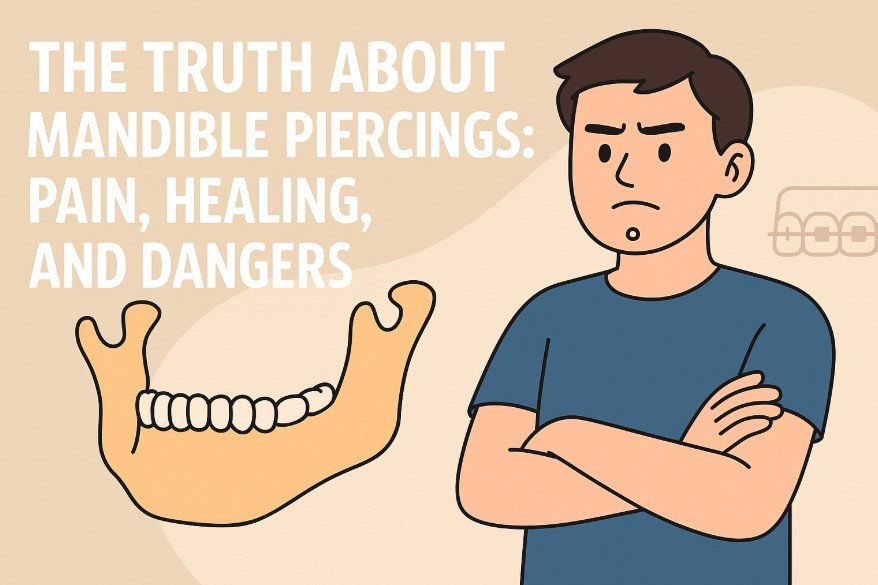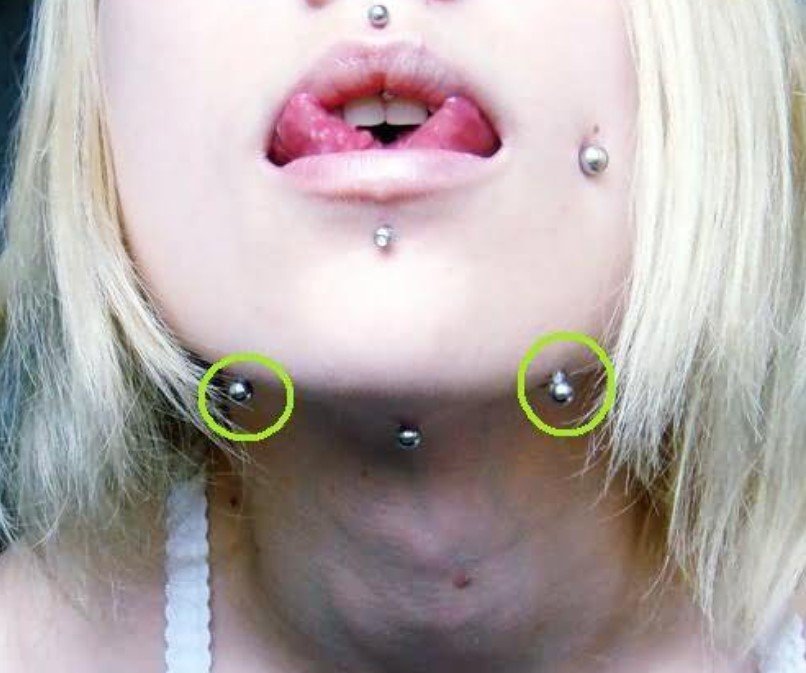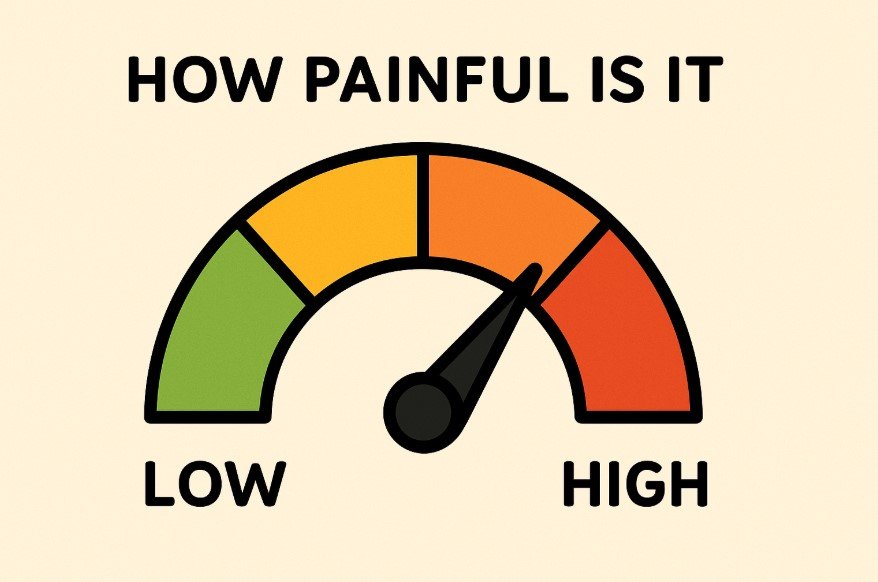Lifestyle
The Truth About Mandible Piercings: Pain, Healing, and Dangers

Mandible piercings are one of the most extreme and unusual types of body modifications. Unlike a nose ring or an ear piercing, this type of piercing goes far beyond what many people would consider normal. It goes through the lower part of the mouth, under the tongue, and out through the soft tissue of the jaw. For those who are thinking about getting one, or are just curious, it’s important to know the full story. In this blog, we’ll explore what mandible piercings really are, how painful they can be, what the healing process involves, and why many experts believe they are one of the most dangerous piercings someone can get.
What is a Mandible Piercing?

A mandible piercing is done by piercing through the soft tissue under the tongue and out through the bottom of the jaw. This is not just a surface-level piercing. It cuts through layers of tissue in one of the most sensitive and active parts of the human body. Some people get this piercing to express a bold and rebellious part of themselves, but it comes with serious risks.
Some people also refer to it as a mandibular piercing, which is another name for the same procedure involving the lower jaw area beneath the tongue and through soft tissue.
There is also a variation known as a trans mandible piercing, which passes completely through the jaw and can be even more intense. This style is extremely rare and requires professional knowledge, strict hygiene, and precise placement.
Why Do People Choose It?
People choose mandible piercings for different reasons. For some, it’s a way to stand out. They want to do something unique that not many others have done. Others may be part of a body modification community where extreme piercings are part of their identity or lifestyle.
Some also say that it gives them a sense of control over their body, especially if they’ve experienced emotional or physical hardships in the past. Choosing a difficult and painful piercing like this can sometimes feel empowering. However, no matter the reason, it’s important to be informed about what you are getting into before making a decision.
View this post on Instagram
How Painful Is It?
To be honest, this is not a mild or simple piercing. The pain level is high because the area being pierced contains many nerves and is constantly in motion due to talking, chewing, and swallowing. The needle has to go through a large amount of tissue, which naturally makes the process more painful than a regular lip or tongue piercing.

Some people describe the pain as sharp and lasting longer than expected. It is not just the moment of piercing that hurts, but also the days and weeks after it. Swelling is common and can affect speech, eating, and even sleeping.
The Healing Process
Healing a mandible piercing is extremely difficult. Unlike ear piercings, this type of piercing moves constantly due to the jaw’s activity. Every time you talk, chew, or even move your mouth slightly, it can irritate the area and slow down healing.
On average, it can take anywhere from 3 to 6 months to heal, but in many cases, it takes longer. Because the piercing passes through so much soft tissue, infection is a serious risk. Even with perfect aftercare, problems can still happen.
You have to be extra careful with oral hygiene. Brushing your teeth, rinsing your mouth with saline or alcohol-free mouthwash, and avoiding spicy or hard foods are all important. Skipping proper care for even a few days can lead to painful infections that may require medical treatment.
What Are the Risks?
The risks are not small. Here are some of the most serious dangers associated with mandible piercings:
- Infection: Because the mouth contains so many bacteria, infections are very common.
- Swelling: In some cases, swelling can be so severe that it affects breathing or eating.
- Nerve damage: If the piercing hits the wrong spot, it can cause permanent nerve damage, affecting feeling in the lower face.
- Gum damage and tooth erosion: If the jewellery rubs against the gums or teeth, it can lead to receding gums or damage to the enamel.
- Scarring: If removed, this piercing can leave visible scars under the jaw.
In some extreme cases, people have needed surgery to repair damage caused by this type of piercing. And if an infection goes untreated, it could even become life-threatening.
What Do Professionals Say?
Most professional piercers advise against getting a mandible piercing unless you are absolutely sure and understand all the risks. Even then, only highly experienced piercers should attempt it. It is not a piercing you can get at just any studio. You should always ask about the piercer’s experience with jaw or oral piercings and check their portfolio.
Doctors and dentists often warn about the health dangers as well. They highlight how easily infections can enter the bloodstream through mouth wounds. For someone with a weaker immune system, this can become very serious.
Emotional Side of Extreme Piercings
There is also an emotional side to this topic. People who choose mandible piercings are often judged or misunderstood. They may face negative comments, bullying, or even trouble finding jobs due to the piercing’s appearance. It’s a personal choice, but one that can affect how others see you.
Some people who regret the piercing later say they felt pressure to do something extreme to feel unique or noticed. It’s important to make sure the choice comes from your own feelings, not from others’ opinions or trends on social media.
On the other hand, others feel proud of their choice. They see it as a powerful symbol of their individuality and strength. If it means something important to you, and you’ve done your research, that decision is yours to make—but you need to be fully prepared.
Final Thoughts
Mandible piercings are not for everyone. They are painful, risky, and take a long time to heal. The decision to get one should not be made lightly. If you’re thinking about it, talk to professionals, look at the real risks, and ask yourself why you want it. Remember, there are other ways to express yourself that might not come with such high health costs.
Choosing to go through with a piercing like this means taking full responsibility for your body and health. You need to be ready for pain, patience, and a lot of aftercare.
If you do go ahead, make sure it’s done by someone qualified, and follow every aftercare instruction carefully. Your health is more important than any trend or extreme statement.
In the end, it’s your body and your choice—but it should be an informed one. If you’re curious about related piercings, we also wrote a full article on jaw piercing safety, pros, cons, and aftercare to help you compare options.
-

 Tech2 months ago
Tech2 months agoSora 2 Invite Code: How to Get One (Step-by-Step Guide)
-

 Social Media2 months ago
Social Media2 months agoWhat the “67” TikTok Meme Really Means
-

 Business2 months ago
Business2 months agoDubai Freezone Company Formation: From Name Reservation to Bank Account
-

 Tech2 months ago
Tech2 months agoWhat To Do When Your Business Faces Network Vulnerabilities






